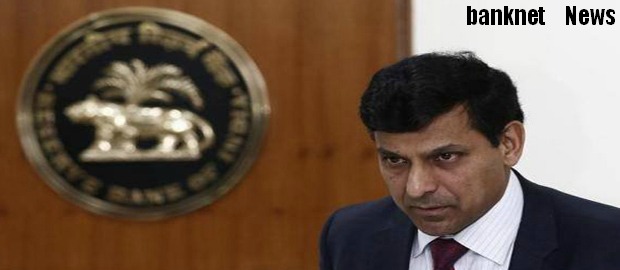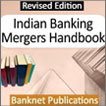

Fourth Bi-monthly Monetary Policy Statement, 2015-16 By Dr. Raghuram G. Rajan, Governor, RBI - Sept 29, 2015 - Full Text
Financial Markets
30. With the objective of having a more predictable regime for investment by the foreign portfolio investors (FPI), the medium term framework (MTF) for FPI limits in debt securities, worked out in consultation with the government, is set out below.
(i) The limits for FPI investment in debt securities will henceforth be announced/ fixed in rupee terms.
(ii) The limits for FPI investment in the central government securities will be increased in phases to 5 per cent of the outstanding stock by March 2018. In aggregate terms, this is expected to open up room for additional investment of ₹1,200 billion in the limit for central government securities by March 2018 over and above the existing limit of ₹1,535 billion for all government securities (G-sec).
(iii) Additionally, there will be a separate limit for investment by FPIs in the State Development Loans (SDLs), to be increased in phases to reach 2 per cent of the outstanding stock by March 2018. This would amount to an additional limit of about ₹500 billion by March 2018.
(iv) The increase in limits will be announced every half year in March and September and released every quarter.
(v) The existing requirement of investments being made in G-sec (including SDLs) with a minimum residual maturity of three years will continue to apply.
(vi) Limits for the residual period of the current financial year would be increased in two tranches from October 12, 2015 and January 1, 2016. Each tranche would entail an increase in limits as under:
Rs 130 billion for central government securities composed of Rs 75 billion for long term investors and Rs 55 billion for others
Rs 35 billion for SDL open to all FPI investors.
A circular with details of the MTF is being issued separately.
31. In the first bi-monthly monetary policy statement for 2015-16, announced on April 07, 2015, it was proposed to permit Indian corporates that are eligible to raise external commercial borrowings (ECB) to issue rupee bonds in overseas centres with an appropriate regulatory framework. Based on the comments received on the draft framework and in consultation with the Government, it has been decided to permit Indian corporates to issue rupee denominated bonds with a minimum maturity of five years at overseas locations within the ceiling of foreign investment permitted in corporate debt (US$ 51 billion at present). There shall be no restriction on the end use of funds except a small negative list. Detailed instructions are being issued separately.
32. The Reserve Bank has placed the draft framework on ECB on its website on September 23, 2015 for comments/ feedback. The revised framework suiting the current economic and business environment will replace the extant ECB policy.
33. Scheduled commercial banks and primary dealers (PDs) are currently permitted to execute the sale leg of short sale transactions in the over the counter (OTC) market in addition to the Negotiated Dealing System–Order Matching (NDS-OM) platform. Short sale in the OTC market is, however, not permitted between the primary member (PM) and its gilt account holder (GAH). The Clearing Corporation of India Ltd. (CClL) has introduced a facility in the reported segment of NDS-OM which captures details of transactions involving gilt accounts. Accordingly, it is proposed to permit short sale by a PM to its GAH and also to treat purchase by a PM from its GAH as a cover transaction. Guidelines in this regard will be issued by end-October 2015.
34. There has been significant improvement in market infrastructure in the inter-bank repo market in G-sec. This enables Reserve Bank to review restrictions placed on repo transactions, particularly relating to the participation of gilt account holders in the repo market, guided by the recommendations of the Working Group on Enhancing Liquidity in the Government Securities and Interest Rate Derivatives Markets (Chairman: Shri R. Gandhi). New guidelines in this regard will be issued by end- November 2015.
35. When Issued (WI) trading in G-sec was permitted in 2006 to facilitate the distribution process by stretching the actual distribution period for each issue and allowing the market more time to absorb large issues without disruption. In order to encourage trading in the WI market, it is proposed to:
(i) permit the scheduled commercial banks to take short positions in the WI market for both new and reissued securities, subject to limits and other conditions in place from time to time; and
(ii) permit regulated entities other than banks and primary dealers (PDs) to take long positions in the WI market.
Detailed guidelines in this regard will be issued by end-November 2015.
36. Guidelines on repo in corporate debt were issued in January 2010. In order to further develop the repo market, a broad framework for introduction of electronic dealing platform/s for repo in corporate bonds will be designed in consultation with the Securities and Exchange Board of India (SEBI).
37. While the currency futures market has grown, participation in this segment has been restricted to a few categories of entities. In order to diversify the participation profile in the currency futures market, stand-alone PDs will be permitted to deal in currency futures contracts traded on the recognised exchanges, subject to adherence to certain risk control measures and without diluting their existing obligations in the G-sec market. Guidelines in this regard will be issued by end-November 2015.
38. At present, exchange traded currency derivatives include futures and options in four currency pairs viz., USD-INR, EUR-INR, GBP-INR and JPY-INR. With a view to enabling direct hedging of exposures in foreign currencies and to permit execution of cross-currency strategies by market participants, exchange traded currency futures and options will be introduced in three cross-currency pairs viz., EUR-USD, GBP-USD and USD-JPY. Necessary guidelines will be issued in consultation with SEBI by end-November 2015.
39. Establishing underlying exposure through verifiable documentary evidence has been a key regulatory requirement for accessing OTC forex markets. To provide more flexibility to market participants in managing their currency risk in the OTC market and for making hedging easier, it has been decided to increase the limit for resident entities for hedging their foreign exchange exposure in the OTC market from US$ 250,000 to US$ one million without the production of any underlying documents, subject to submission of a simple declaration. It is further proposed to comprehensively review the documentation related requirements in the OTC market. The possibility of participation by financially sophisticated investors up to certain limits in currency markets without underlying exposure will also be examined. Revised draft of the existing framework will be issued for public comments by end-December 2015.
Assessment ... Read more
Policy Stance and Rationale ... Read more
Banking Structure... Read more
Financial Markets ... Read more
Currency Management... Read more
RBI Monetary and Credit Policies (1999-2016) - Notifications, Press Releases, Reports - Click here

BANKING

FINANCE

INSURANCE

TECHNOLOGY

Foreign Exchange


